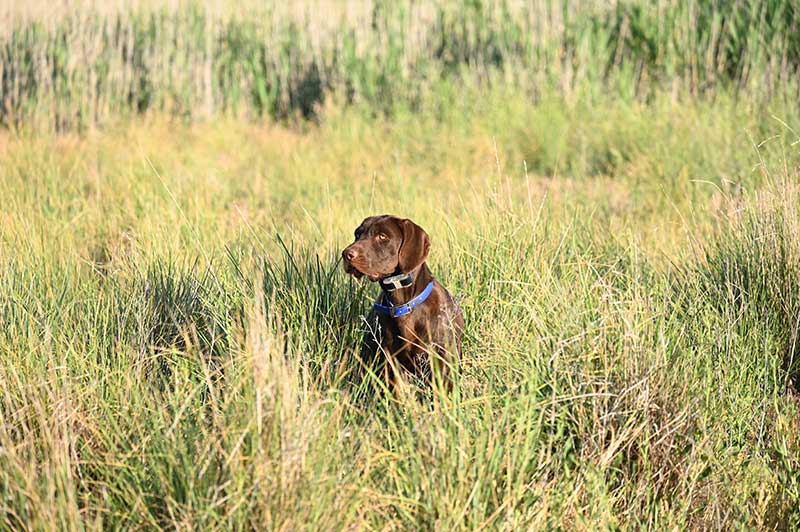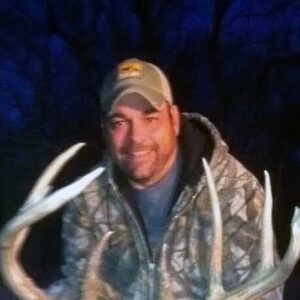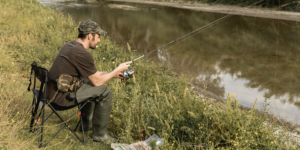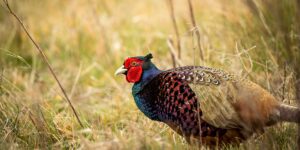The conservation reserve program, or more commonly referred to as CRP, is a land management program that is ideal for landowners and bird hunters. Why? Because the program focuses on building habitat that is ideal for local animal populations and the government pays landowners to do it. There’s no question that CRP Land is already good, but what if it could be even better?
Why limit yourself to public land when there are millions of acres of private land to explore.
What is CRP Land?
CRP is administered by the Farm Service Agency (FSA) and is a voluntary agreement between the FSA and agriculture producers to enhance agricultural land to better benefit wildlife. In exchange for a yearly rental payment, farmers/landowners who are enrolled in the program agree to remove environmentally sensitive land from agricultural production. Instead, farmers/landowners must plant species that will improve the environmental health and quality of the land.
Farmers sign CRP contracts to enroll their lands in the program, and those contracts can last from 10 to 15 years in length. The goal of the program is to re-establish valuable land cover for wildlife, especially that of upland birds. In all, the program helps to improve water quality, prevent erosion, and ultimately reduce the loss of wildlife habitat that is drastically decreasing across the United States.
A Brief History of the Conservation Reserve Program
Congress created CRP In 1985, and then President Ronald Reagan signed it into law. The program was created after high levels of soil erosion were being found across the country. It is one of the largest private-land conservation programs in the United States and was developed specifically to enhance wildlife habitat.
The 1985 Farm Bill authorized the USDA to enroll up to 45 million acres in CRP. However, since that time, the amount of acres allowed to be enrolled has wavered up and down, with actual enrollment never exceeding 37 million acres.
The 2014 Farm Bill took the CRP acreage cap from 32 million acres down to 24 million acres in 2018. The 2018 Farm Bill increased the CRP acreage to 24.5 million acres in 2020, 25 million in 2021, 25.5 million in 2022, and eventually to 27 million acres in 2023.

How CRP Benefits Outdoor Enthusiasts
The Conservation Reserve Program has helped wild upland bird populations across the country, and brought not only hunters more opportunities at new lands and waters, but also bird watchers, anglers, and other outdoor enthusiasts.
These outdoor enthusiasts travel to rural areas for their hobbies, bringing thousands of dollars to rural communities. Based on data from national surveys given to both farmers and hunters, it is estimated that $290 million per year is made in recreational spending attributed to CRP enrollment.
Is CRP land still a good investment for Landowners?
For some landowners, CRP is beneficial to their operation, for others it is not. According to Seth Baker, a certified appraiser, enrolling your land into CRP and benefitting from it depends on the quality of your land, location, timing, and the goals/objectives of the owners and potential buyers.
Flood plain land that is bad for farming because of its potential to flood and demolish crops, is ideal for CRP enrollment. However, enrolling your land in CRP can sometimes decrease the value of your property because the income from CRP is set for a period of time, while the rate of return a buyer expects goes up. But at the end of the day, it depends on what you do with your land at the end of your contract. Can the land be put back into production and be tillable for crops? Are you leasing your land for hunting and having CRP makes it more profitable?
CRP Land + Wing It = A Better Way to Monetize & Use Land
Lands enrolled in CRP are highly sought after for bird hunting enthusiasts and other recreational users. When your land features CRP and you team with Wing It, you’ve just created a better way to monetize the use of your land.
Signing your lands up for activity based rental on Wing It is completely free. Landowners set their own rates and receive 100 percent of the profits from users. Wing It works to partner with landowners so they can better monetize their CRP land and bring in users to help offset costs of lands that are otherwise sitting with no activity.
Better yet, even if your lands do not qualify to be enrolled in CRP, Wing It is the perfect option and a good way to improve your income per acre and overall value of your land.
The hassle free way to monetize your acreage.
FAQ
What does CRP land stand for?
CRP stands for Conservation Reserve Program, a voluntary agreement between the FSA and agriculture producers to enhance agricultural land to better benefit wildlife.
Who is eligible for the Conservation Reserve Program?
To be eligible for CRP enrollment, a producer must have owned or operated the land for at least 12 months prior to submitting the offer for continuous or 12 months before the close of general or grasslands signup. Cropland must be planted or considered planted to an agricultural commodity for four to size years from 2012 to 2017, and that is physically and legally capable of being planted. Lands must also meet one of the following criteria: Have a weighted average erosion index of eight or higher; be enrolled in a CRP contract that expires Sept. 30 or; be located in a national or state CRP conservation priority area.
Marginal pasture land may also be eligible for continuous signup. CRP Grasslands has alternative requirements for eligible land.
How do I apply for the Conservation Reserve Program?
Locate your local FSA office to enquire about enrolling in the Conservation Reserve Program.
When are CRP payments made?
The Farm Service Agency provides annual rental payments to those enrolled in CRP. They also provide certain incentive payments and cost share assistance.
How much does CRP land pay?
Lands enrolled in CRP may receive anywhere between $10 per acre, to $300 per acre.
Can you hunt CRP land?
Not all CRP lands are open to hunting. You can hunt CRP on private lands when the landowner has given permission or enrolled their lands in state walk-in areas.
How can Wing It make CRP land better?
By enrolling your lands in CRP and working directly with Wing It, you can further monetize your land through the partnership. Lands that otherwise get unused can now make double the income from the contract agreement with the FSA, and 100 percent of the activity fee usage that you set for your lands. Wing It works directly with landowners to help make their properties more profitable for outdoor enthusiasts, and covers the cost of marketing and insurance. For hunters and outdoor enthusiasts Wing It helps make CRP Land more accessible and affordable so they can do the activities they love on more private land.



